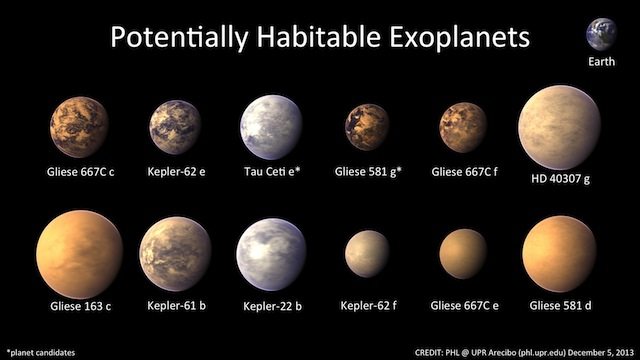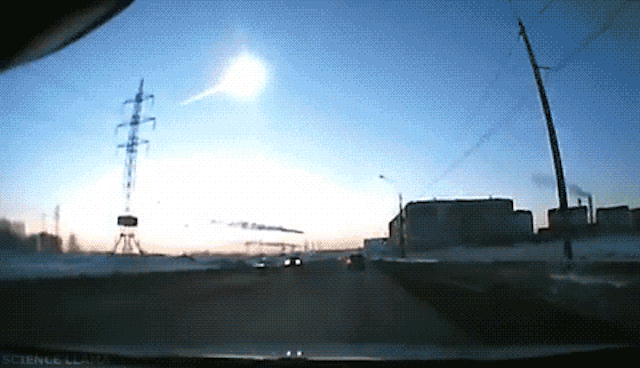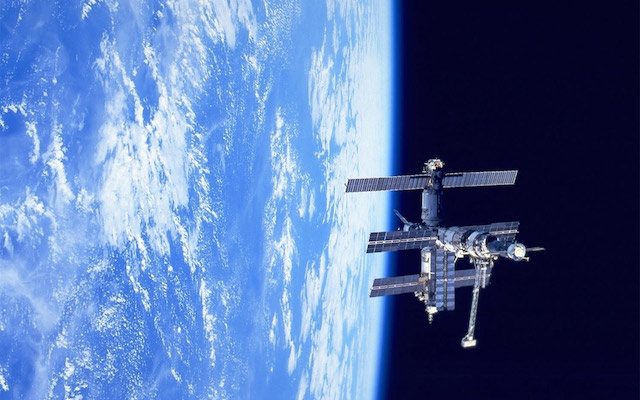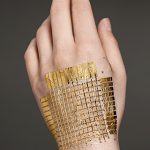Last week I published a list of top 10 things science fiction promised us that didn’t happen by 2013. So, lest you think I’m completely negative, let’s take a look at a few things that did happen in–or at least by–2013 that were predicted in science fiction.
The funny thing about progress is that it’s rarely confined to just one year. This list collects some of the important stuff that either happened or reached a tipping point in the last few years. They are my favorites, but feel free to share yours in the comments below.

1. Human Clones
Although cloning is nothing new, 2013 saw the first human stem cells created using cloning techniques. Shoukhrat Mitalipov and colleagues have cloned human embryonic stem cells (ESCs). Yes, we’ve already created fully formed sheep, but human cells is something new, and took years of practicing with monkey and navigating labyrinthine US regulations on cloning.
There is likely to be a lot more debate about the morality of human cloning, but remember, clones are people two.

2. Second Earths
Although we’ve found plenty of exoplanets over the past few decades, they have all either been too big, too small, too close to their star or too far from their star. But in 2013, the Kepler Space Telescope confirmed the first Earth-sized exoplanets–or Goldilocks planets–in the star’s habitable zone, meaning they could be likely vacation spots and may even harbor lifeforms for us to go an visit. The one downside is that all of the planets discovered are still a good deal larger than our island home, so any spas on these planets will put on the weight.
However, even more exciting is, as large as these planets are, that the twelve planets discovered means that earth-like planets are going to be pretty common. Possibly 22% of all Sun-like stars will harbor second Earths, possibly billions in our galaxy alone.
Now the question is how do we get there?

3. Interstellar Space Travel
Voyager 1 has left the solar system. It’s not exactly the Starship Enterprise, but after traveling for more than 127 AU–19,000,000,000 km– the tiny little space probe that could went interstellar. While technically this happened in late 2012, it took over a year for the good scientists at NASA to confirm it. The probe has enough nuclear fuels to keep on performing scientific experiments for the next decade, but after that it’s a relatively slow and lonely trip out towards years of a star in the constellation Camelopardalis. If only we knew if there were some Earth-like exoplanets in that general direction.

4. Asteroid Collision
It may not have wiped out life on earth as we know it, but the Chelyabinsk meteor definitely made an impact. The asteroid streaked across the skies of Southern Russia in February, with a sound wave so powerful it traveled around the globe twice, injuring more than 1,000 people. And this was a tiny one by comparison with what else is out there.
After Chelyabinsk, scientists now believe we have underestimated the threat, but this is serving as a wake-up call. The previously moth-balled WISE telescope is back to keep an eye out for potentially dangerous near-Earth objects. Hopefully next time we’ll know in advance when the sky is falling.

5. Big Brother Government
I remember as a young lad reading George Orwell’s masterwork, 1984, with great fear, but being highly skeptical of the entire concept that the government could spy on all of the people all of the time. Just a short 30 years later would come the answer: use computers to watch the people and then use the people to watch each other.
Of course to the surprise of almost no-one, it came out in 2013–thanks to whistle blower Edward Snowden–that the US government was sucking in massive quantities of private communications, not just from foreigners, but also from US citizens, something that is pretty clearly against the Constitution.
But really, we don’t need the government to spy on us. We have Facebook for that. Instead of the government, we just have everybody watching everybody. It may not be exactly what Mr. Orwell predicted, but we are all watching each other these days using the Internet. Whether it’s the media spying on the rich and famous or the despicable practice of “revenge porn,” we are all under the microscope now. And these people are all publicly taken to their own virtual Room 101 to suffer for their actions.
6. Telepathy
Got a mobile phone and Bluetooth headset? Then you’re a telepath. Stay with me on this one. Telepathy is the ability to broadcast your thoughts across small or great distances to another person’s mind instantaneously, seemingly without using your normal senses. With a wireless headset you can send thoughts (through speech) to anyone in the world almost instantaneously.
And now, with Google Glass we can project exactly what we are seeing and hearing in real time at the speed of light to anyone who cares to participate.
Implant the headset behind your ears and mic at your throat, learn how to sub-vocalize (speaking with only your throat) and no one around you would hear. For all intents and purposes, telepathy. It makes me wonder if all of the crazy people you see wandering the streets muttering to themselves aren’t just early adopters.
7. A Permanent Space Station
Although started in 1998, the International Space Station (ISS) was finally completed in 2011 and is now fully crewed with 14 occupants. It may not be the double ringed floating Hilton envisioned in 2001: A Space Odyssey, but it still counts.
In fact, one recent inhabitant even found enough free time in 2013 to record a little music video that went viral down here on Earth.
8. Moons of Gold
In 2012, Scientists found planets of diamond. Not to be outdone, 2013 was the year of the moons of gold, like the dreaded planet Voga in Doctor Who. Unlike most other common elements, gold is not produced by nova or even super-nova events, but instead when two neutron stars collide, which is not the most common phenomena in the universe.

9. The Matrix
Yes, the Web has been around for 20 years now, but only in the last few years has there been widespread deployment of some important new technologies that will fundamentally change the way you view the Internet’s most popular offspring. “Web 2.0” was really just a marketing ploy compared to how HTML5, CSS3, and the new web typography are shaking things up.
If you are using Firefox, Chrome, Safari, iOS devices or other tablet devices to view the Web, then you are getting a taste of things to come. Expect the static pages you are viewing now to come alive, transforming The New York Times into something more akin to the The Daily Prophet from Harry Potter.
10. Cybernetic Skin
The future may not be Google Glass; the future of wearable computing is skintight. Flexible “e-skin” can be applied directly to the human body, creating bionic skin. At first, this could be used to monitor medical conditions or provide better prosthetics, but that’s just the beginning. In the future, computers may literally be invisible instruments stretching across our skin, but feeding us with all of the data and communications we get now from hand-held devices.
Check out this incredible video and then let us know what you think:




Your number 7 point… Station is regularly fully staffed with 6 crew members, not 14 like you stated. When the shuttle was still flying, there were 13 personnel located their (including the shuttle crew),